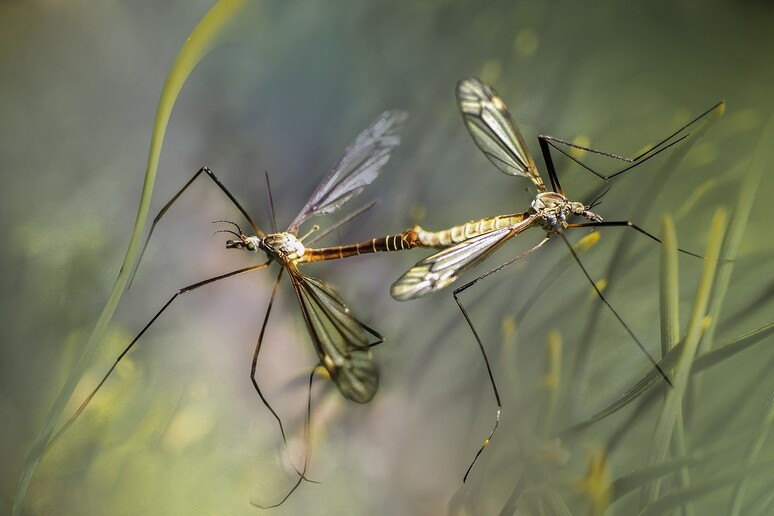Love stories between mosquitoes can become a weapon against malaria, which is responsible for hundreds of thousands of deaths each year. The idea is to exploit coupling to spread useful genetic modifications, which make the mosquitoes sterile or unable to transmit the malaria parasite. But in order to do this it is indispensable to have a good grasp of the mechanism of coupling, and a major step forward in this direction has come from an Italian study born of the collaboration between the National Research Council’s (CNR) Complex Systems Institute (ISC), Rome’s Sapienza University, and the University of Perugia. The study, published in the journal Scientific Reports, constitutes a reference point for evaluating the efficacy of the new technologies.
The researchers reproduced swarms of mosquitoes in the laboratory. “It was a very complicated task,” says Irene Giardina of the Sapienza and ISC-CNR, co-author of the study. "We decided to study these swarms in very large cages in order to be able to analyze the mosquitoes’ flight dynamics, avoiding potential effects on behavior due to the confined space of small cages”.
For Stefania Melillo of ISC-CNR and the Sapienza, among the authors of the study, "the most important novelty presented in the article is that we succeeded in documenting various coupling events” and “the most amazing thing is certainly having observed and documented the competition of coupling: several males competing to couple with the same female at the same time.”
Riproduzione riservata © Copyright ANSA













